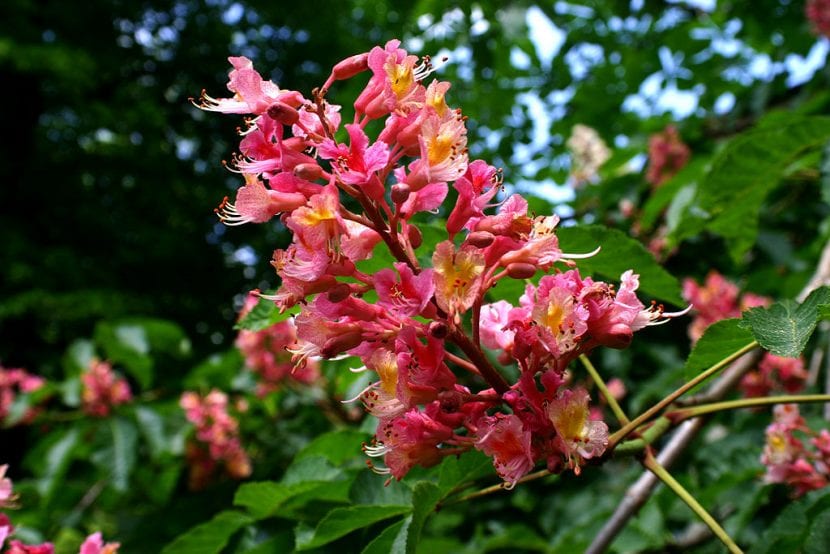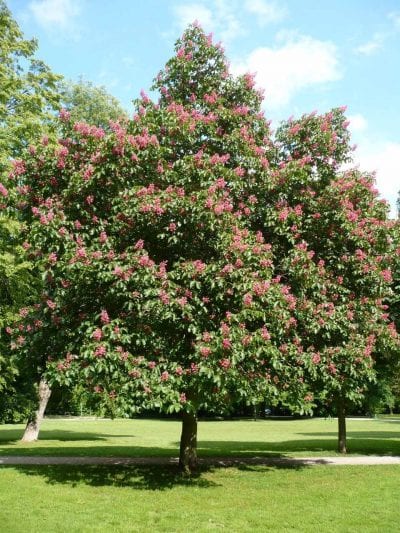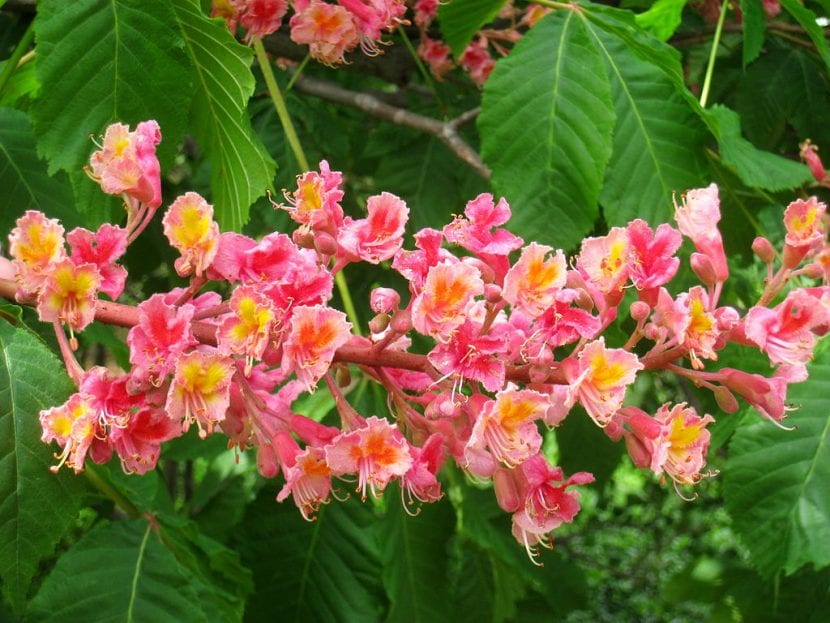
Do you like horse chestnut? It is a tree that fascinates me. In fact, I have one that is more spoiled… 🙂 But from Aesculus, which is the botanical genus to which it belongs, there are species and hybrids of white flower -the most common- and pink flower. The latter is wonderful.
So If you would like to enjoy the pink flower chestnut, do not hesitate: read on! : )
Origin and characteristics

Our protagonist is a hybrid deciduous tree of Aesculus hipposcastanum (the common horse chestnut) and Aesculus pavia. »Briotii» is a variety of Aesculus x carnea of double red flowers. A) Yes, the scientific name is Aesculus x carnea »Briotii». It is popularly known as rose chestnut, rose-flowered chestnut, red horse chestnut, and false red-flowered chestnut.
Reaches a maximum height of 26 meters, although the usual thing is that it does not exceed 18m. It has a dense crown, composed of leaves of a more intense green color and a size greater than that of the Aesculus hipposcastanum, which means that they are just over 20cm wide. The trunk is straight and has a dark gray-green bark with pink fissures that turn red over time.
Blooms in spring (April-May in the northern hemisphere). The flowers are grouped in panicles 12 to 20cm long and are red in color. The fruit is a brownish-green, smooth or somewhat spiny capsule that contains 2-3 seeds. It has a life expectancy of 200 years.
How do you take care of yourself?

If you want to get a copy, we recommend providing the following care:
- Location: outside, in full sun. In climates where the summer is especially hot (with temperatures of 30ºC or more), place in semi-shade.
- Earth:
- Garden: the soil must have good drainage and be acidic (pH 4 to 6).
- Pot: because of its size it is not a good plant to have in a pot, but if you are like me who loves to experiment, use 70% akadama mixed with 30% kiryuzuna and plant it in a large pot of about 40cm.
- Irrigation: every 2 days in summer, and every 4-5 days the rest of the year.
- Subscriber: from spring to summer with organic fertilizers, such as guano or humus. If it is potted, use liquid fertilizers.
- Planting or transplanting time: in spring. If it is potted, transfer it to a larger one every 2-3 years.
- Pruning: It's not necesary. It will be enough to remove the dry, diseased or weak branches at the end of winter.
- Rusticity: supports up to -18ºC, but does not like excessively hot places. Ideally, the maximum 30ºC should not be exceeded.
Do you need more info? Click here to read the article about the horse chestnut, a tree that has the same needs as the pink-flowered chestnut 🙂.